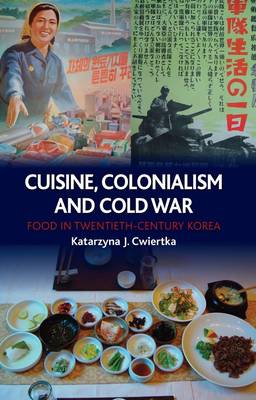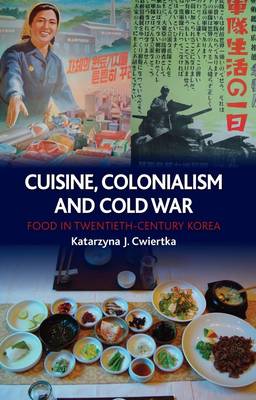
Door een staking bij bpost kan je online bestelling op dit moment iets langer onderweg zijn dan voorzien. Dringend iets nodig? Onze winkels ontvangen jou met open armen!
- Afhalen na 1 uur in een winkel met voorraad
- Gratis thuislevering in België vanaf € 30
- Ruim aanbod met 7 miljoen producten
Door een staking bij bpost kan je online bestelling op dit moment iets langer onderweg zijn dan voorzien. Dringend iets nodig? Onze winkels ontvangen jou met open armen!
- Afhalen na 1 uur in een winkel met voorraad
- Gratis thuislevering in België vanaf € 30
- Ruim aanbod met 7 miljoen producten
Zoeken
Cuisine, Colonialism and Cold War
Food in Twentieth-Century Korea
Katarzyna J Cwiertka
Hardcover | Engels
€ 48,95
+ 97 punten
Omschrijving
When you consider the size of Korea's population and the breadth of its territory, it's easy to see that this small region has played a disproportionately large role in twentieth-century history. The peninsula has experienced colonial submission at the hands of Japan, occupation by the United States and the Soviet Union, war, and a national division that continues today. Cuisine, Colonialism and Cold War traces these developments as they played out in an unusual sphere: Korea's national cuisine, which is savored for its diversity of ingredients and flavor. Katarzyna J. Cwiertka shows that many foods and dietary practices identified as Korean have been created or influenced by its colonial encounters, and she uncovers how the military and the Cold War had an impact on diet in both the North and South. Surveying the manufacture and consumption of rice and soy sauce, the rise of restaurants, wartime food, and the 1990s famine that still affects North Korea, Cwiertka illuminates the persistent legacy of Japanese rule and the consequences of armed conflicts and the Cold War. Bringing us closer to the Korean people and their daily lives, this book shines new light on critical issues in the social history of this peninsula.
Specificaties
Betrokkenen
- Auteur(s):
- Uitgeverij:
Inhoud
- Aantal bladzijden:
- 237
- Taal:
- Engels
Eigenschappen
- Productcode (EAN):
- 9781780230252
- Verschijningsdatum:
- 15/11/2012
- Uitvoering:
- Hardcover
- Formaat:
- Genaaid
- Afmetingen:
- 142 mm x 218 mm
- Gewicht:
- 476 g

Alleen bij Standaard Boekhandel
+ 97 punten op je klantenkaart van Standaard Boekhandel
Beoordelingen
We publiceren alleen reviews die voldoen aan de voorwaarden voor reviews. Bekijk onze voorwaarden voor reviews.











